It is no secret growing vegetables in your backyard is becoming more and more popular. In fact, according to a study by the University of Georgia, we experienced a 35% growth of new home gardeners during our COVID quarantine/isolation event back in 2020. That desire to be self-reliant with your own backyard vegetable garden has continued to grow through current times.
With many ways to garden, I’m here to tell you that raised bed gardening is the best way to go if you are looking to achieve a bountiful harvest, delicious and nutritious food, and healthy living from your backyard garden, especially with beginner gardeners and requiring a small footprint.
This article will explain to you the 11 top benefits of raised bed gardening.
Soil Quality
The quality and composition of your soil, including the pH, is critical to your garden harvest. My backyard soil is not very fertile and includes a lot of clay right under the surface. When I was using conventional rows, I was stuck with the native soil I had and even amended it, but never was great soil.
Feed the Soil, Not the Plant”
Old Gardening mantra
However, for raised garden beds, you get the opportunity to start from scratch with an optimal soil mix with plenty of organic matter. Therefore, you have direct control of the soil mix that will be present in the raised garden bed.
Soil Mix Recommendation
My recommendation for optimal raised bed garden soil is Mel’s Mix from Square Foot Gardening’s approach which is made up of 1/3 sphagnum peat moss, 1/3 coarse vermiculite, and 1/3 a blend of 3 -5 composts. I also like to add some Azomite Rock Dust when amending to supply needed micro-nutrients.
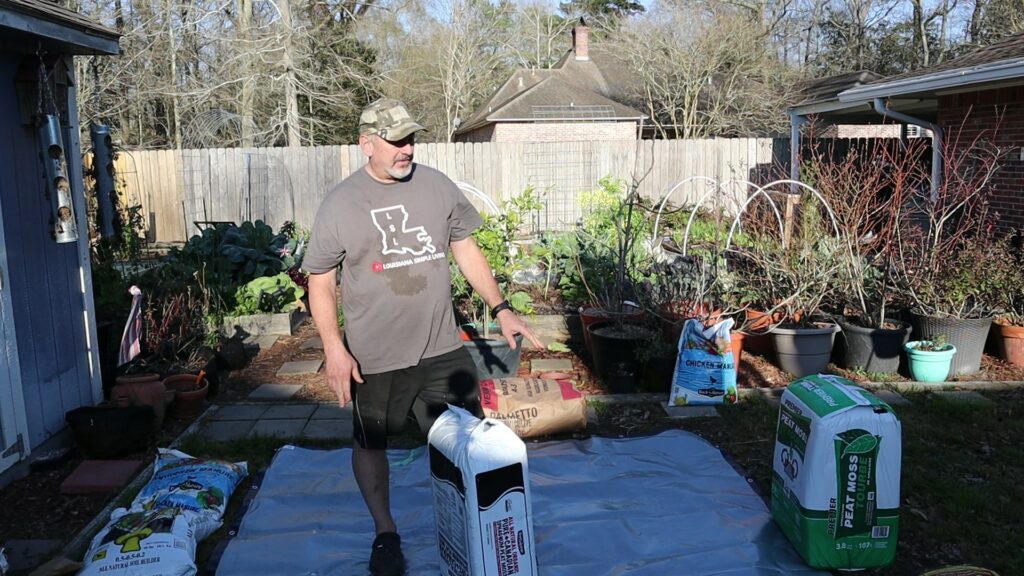
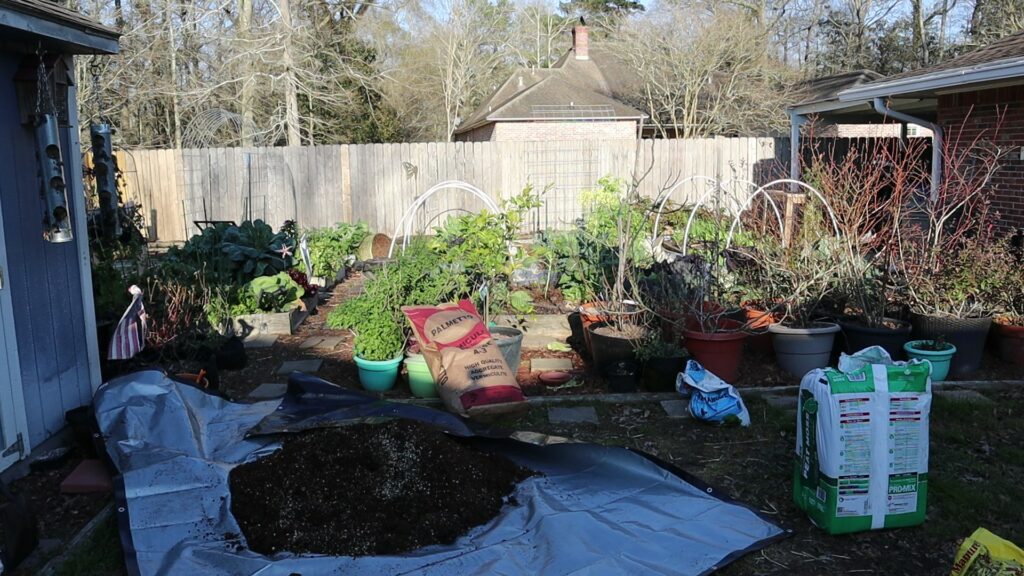
Be careful with using just plain-ole garden soil from your local plant nursery. It can take years of amending the soil to get it up to par with gardens using Mel’s Mix. This of course depends a lot on the quality of soil sold by your local landscaping or plant nursery
Remember the right mixture of organic material is what makes your soil happy.

It’s my recommendation to use Mel’s Mix for new garden beds and use it as an amendment for your existing ones. I amend my soil every season or no longer than annually. I add in those soil components of Mel’s Mix along with some Azomite rock dust for micro-nutrients. There are other high-quality soil mixes but this prescribed soil mix is the best one that I’ve ever used. Don’t hope you have good soil. Ensure you have better soil!
No-Till Zone
Soil density, which relates to how compressed the soil is, limits plant root growth. Therefore, keeping our soil loose and friable, and keeping alive our earthworms, helps keep soil compaction down for better plant growth.
Raised beds are built with the intention of not walking on the soil where the plants will grow. The raised bed should be no more than 4 feet wide so all plants can be reached with easy access without walking in the bed.
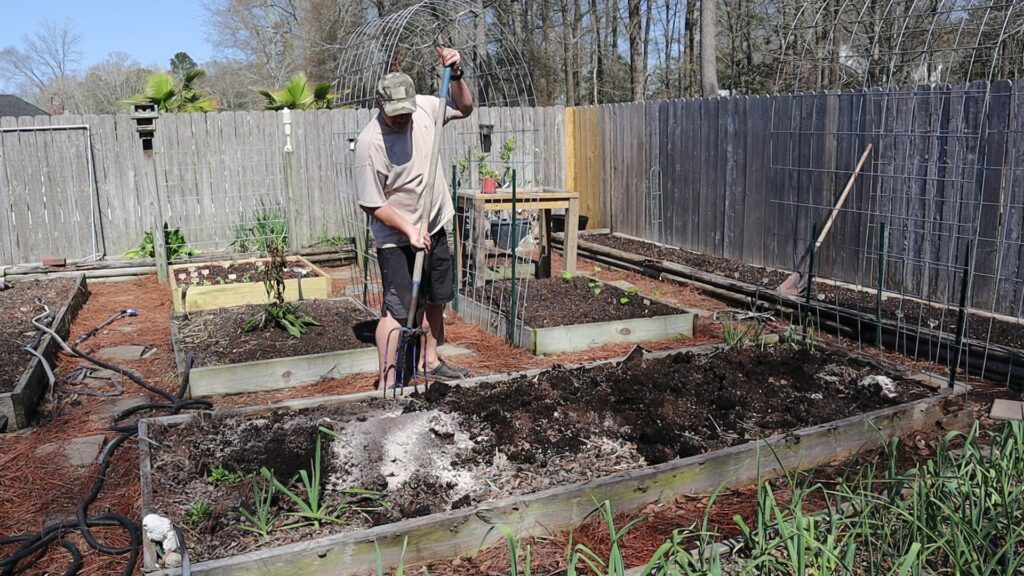
When we go to amend the soil, we don’t want to use a tiller. We will work the soil amendments like compost and Azomite rock dust on the top 4 – 8 inches of the soil using a shovel or fork.
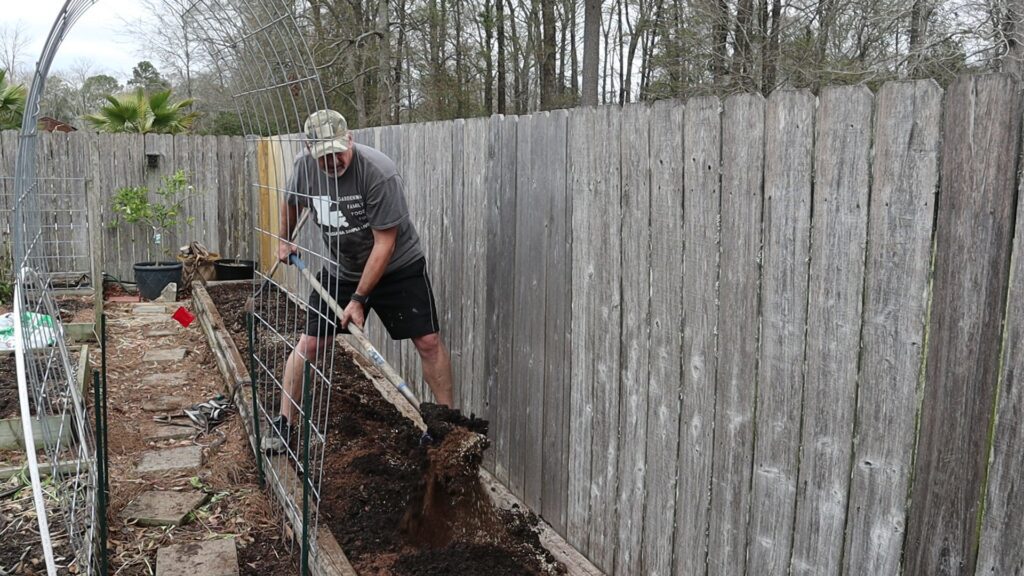
Doing it this way allows us to keep our soil loose and friable which allows for optimal plant root growth. It also allows our underground garden helpers, aka earthworms, to nurture and inhabit our raised beds. Not only is it less effort, not tilling, but ensures our soil health is at its best.
Easier to Water
It’s easier to focus on watering your raised beds rather than longer rows planted in-ground or over a massive area. I’ve moved to an automated watering system that sets my plants for success.
In my system, I’ve installed 1” poly piping from my watering faucet underground to each of the raised beds. The poly piping pops up in the corner of each raised bed. I connect soaker hoses, one for each bed.
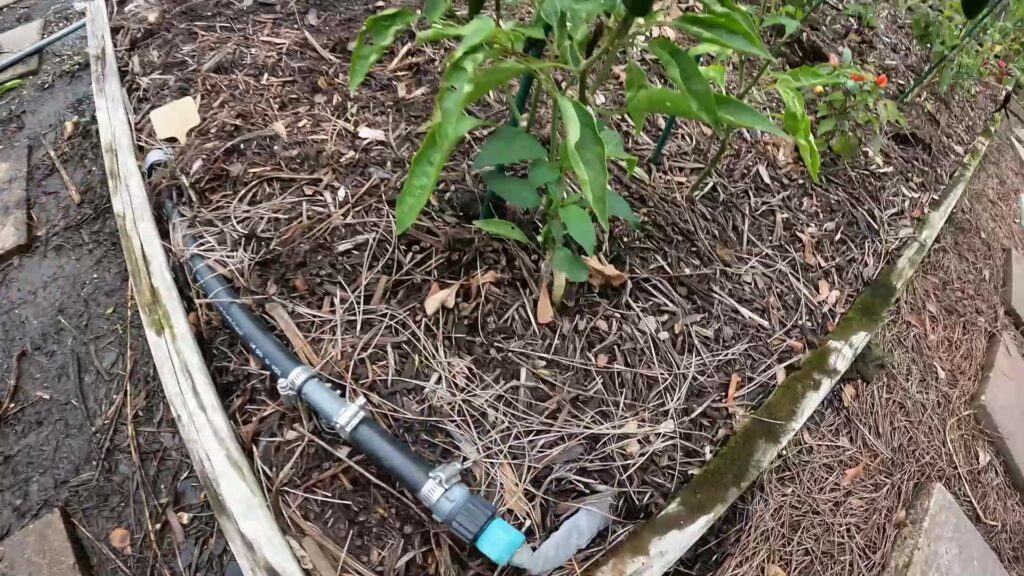
I have a timer that automatically kicks on the water once or twice a day for a set number of minutes. Watering really becomes easy and drops the stress when away from the home. It also creates a safer work environment as all the lines and drip hoses are inside of the raised beds eliminating a tripping hazard.
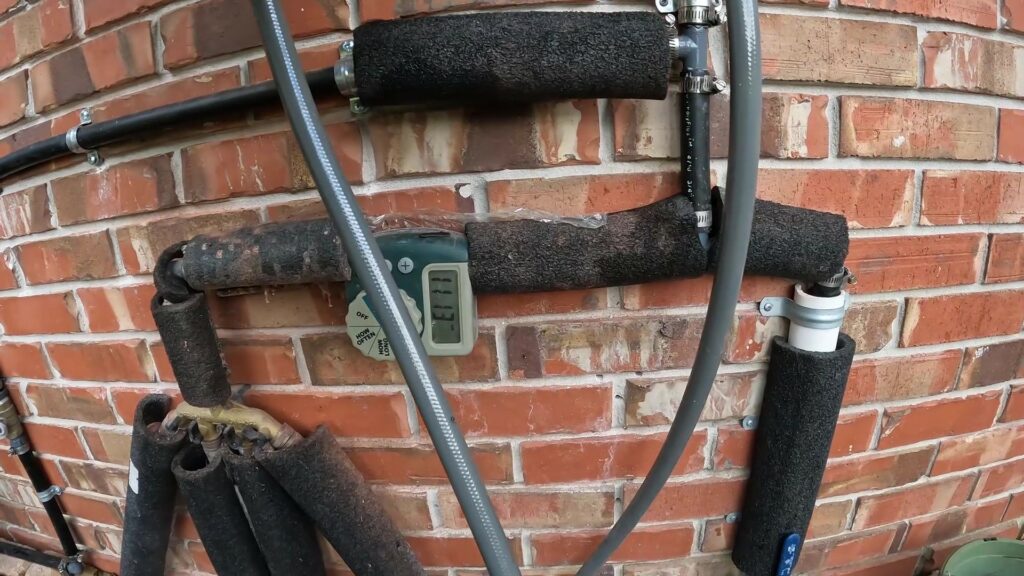
Moisture/Water Retention
Raised beds utilize physics to help improve drainage. Bringing your raised bed up above ground level, allows gravity to help water drain out of your raised bed garden soil. It even works well for heavy rains that we see often here in the Gulf South.
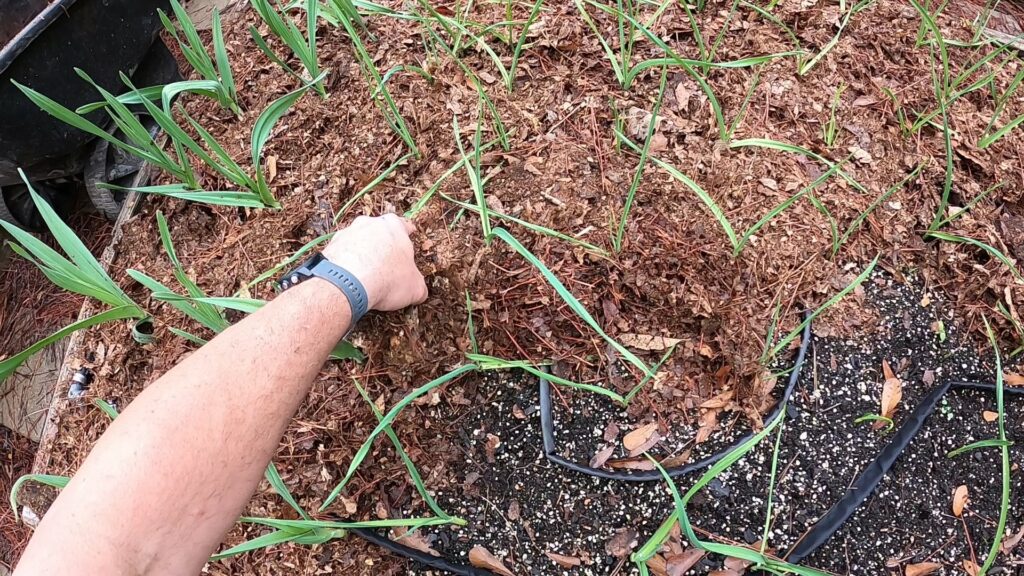
If you utilize a soil mix like Mel’s Mix and mulch your beds, you don’t have to worry about drainage or retaining moisture. The sphagnum peat moss and vermiculite all soak up water to retain moisture but release excess, so you have good drainage. It will be the optimal situation where your raised beds drain well yet retain the moisture needed for your plants to thrive.
Efficient Use of Garden Space
Conventional row gardens take up a lot more space as the plant spacing is much higher than raised beds. This may not be a concern If you have plenty of land. But, if you are gardening in your backyard, you absolutely will be concerned about how much space the garden takes up.
Each square foot inside our raised bed will be used to grow vegetables and a pollinator flower interspersed. Raised beds, hands-down, are a much more efficient use of the garden space in your backyard garden.
Less Weeding
Before raised beds, I was spending a large portion of my garden maintenance time picking weeds. They seemed to be everywhere: in the rows and in the walkways. With raised bed gardens, that task is significantly reduced.
You still must pull weeds in your raised beds but that’s primarily from weed seeds that are blown or dropped in. These seeds are just getting started so they are easy to pick before they get established. Fewer weeds mean a happier gardener!
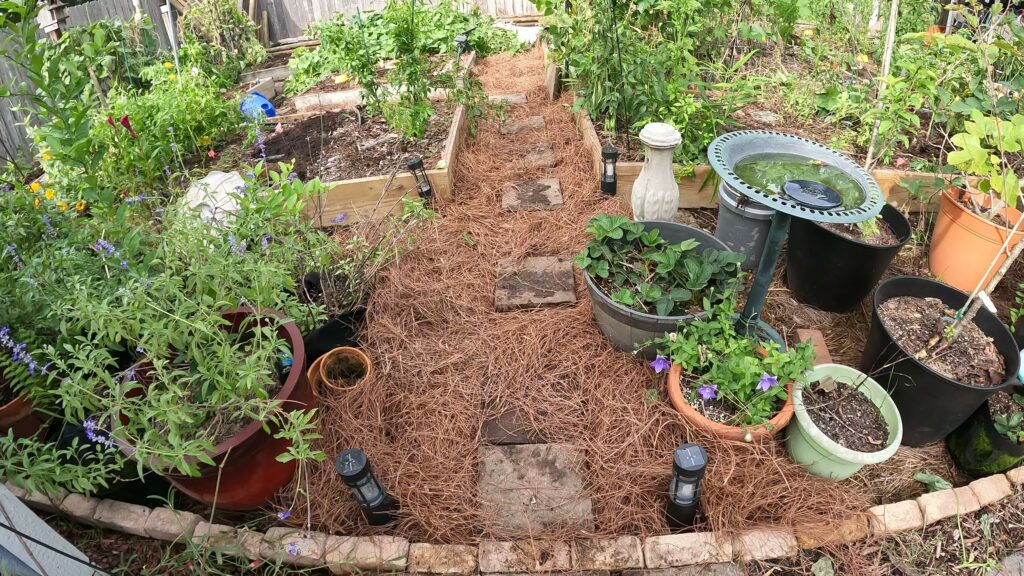
Mulching in your raised beds along with tighter plant spacing shades the seeds out as well. I also have to weed the walkways, but a layer of pine straw or other type of mulch keeps those seeds from getting established as well.
Pollinator Planting
One of the premises of successful planting is to intersperse your vegetables, companion plants, and pollinator plants throughout your raised beds. This is simple to do in a raised bed arrangement versus a traditional row garden. It’s advantageous to intersperse flowers like marigolds, zinnia, etc., throughout the garden to attract pollinators.
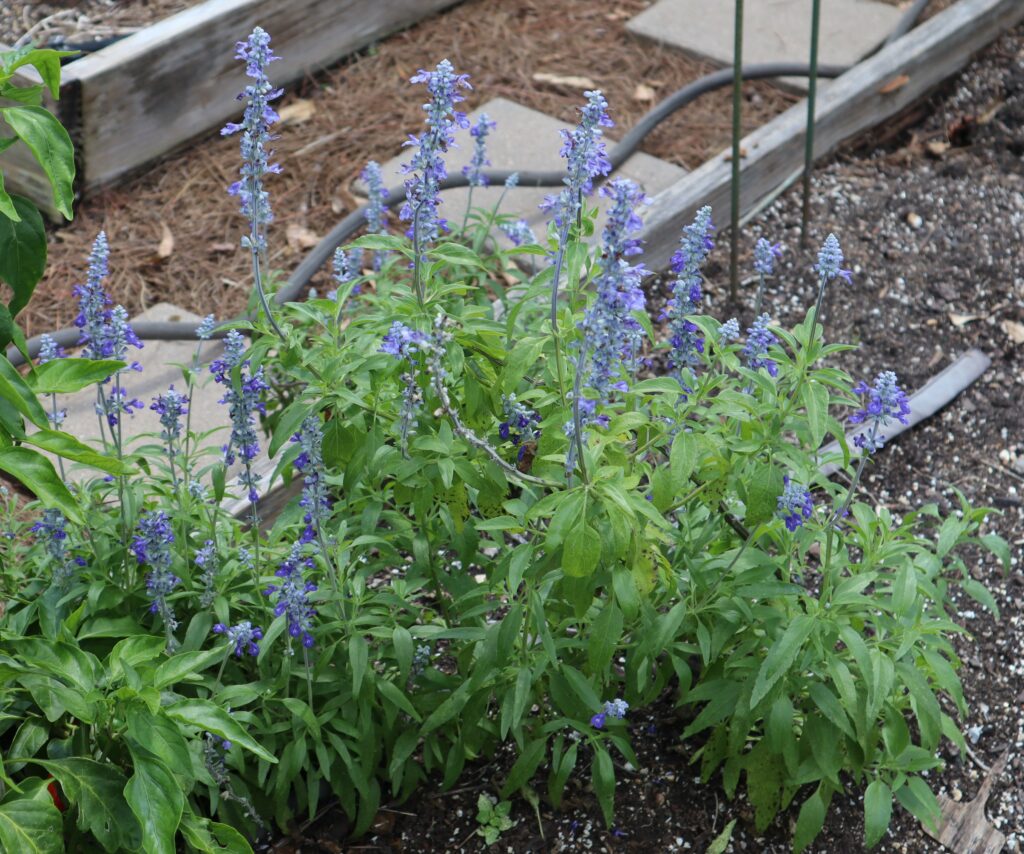
You can put a flower in the middle of the raised garden bed and it will attract pollinators to all your plants in that raised bed.
Planting for Pest Management
From a pest control standpoint, I like to intersperse my tomato, pepper, eggplant, and squash plants so that it makes it a little bit harder for the bad bugs and/or diseases to find and attack my plants. In other words, if all my squash were in one area, the squash vine borer moth would have it easy finding and laying an egg on all my squash. Whereas I spread them out throughout the garden, I might have a chance that he or she will miss some.
This is a great way to help your garden help itself.
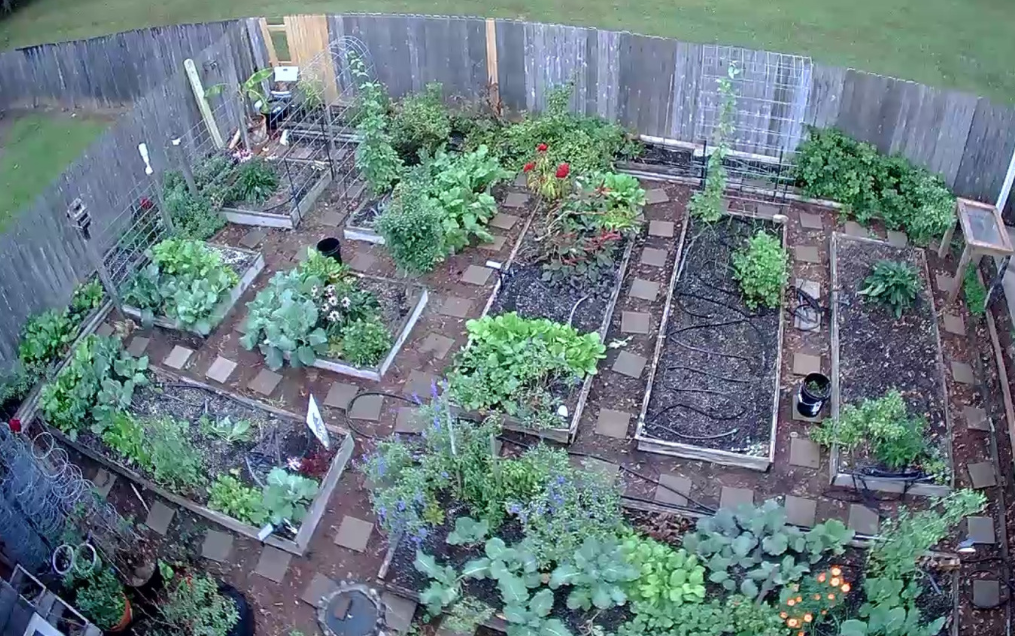
Think about how that would apply to tomato hornworms or even diseases like bacterial wilt or early or late blight. If all my tomatoes are adjacent to one another, it would be easier to move to my other tomato plants and attack them.
“The glory of gardening: hands in the dirt, head in the sun, heart with nature. To nurture a garden is to feed not just the body, but the soul”
Alfred Austin, Poet and Gardener
Some plants do a good job of helping control pests. Like humans, insects have a preference for certain foods or plants from the bug’s perspective. We can help confuse our destructive bug population by using certain plants with a more pungent odor. These plants therefore should become a part of your organic approach to pest management. Some of these more pungent plants that are beneficial for pest management include herbs and flowers.
Examples include:
| Basil | Onion |
| Borage | Oregano |
| Chives | Parsley |
| Dill | Rosemary |
| Garlic | Sage |
| Marigold | Thyme |
Companion Planting
Certain plants just do well together. With that in mind, when deciding on where and what type of plants you will grow in your raised bed garden, consider that some plants planted together in the same raised bed garden can create a mutually beneficial pairing.
The advantageous characteristics of companion gardening include a boost in plant growth and production, providing much-needed shade, drawing in beneficial pollinators, enhancing flavor, and even warding off destructive pests (as mentioned above).
Some suggested companion plants include:
- Corn, Beans, and Squash: This “ three sisters” combination is a traditional form of companion planting that is attributed to Native Americans. All three crops contribute to the growth and success of the other plants. All these plants work in harmony to support each other while they grow.
- Beans/Peas and Squash: Beans and Peas fix nitrogen back into the soil which feeds nearby plants, especially heavy feeders like Squash.
- Tomatoes and Basil: Basil repels mosquitos and flies. Planting a few basil plants around a tomato plant helps naturally repel destructive bugs like aphids, hornworms, and spider mites. Basil is purported to enhance the flavor of your tomato crop.
- Borage and Tomatoes: Borage generally is an organic repellant of hornworms and cabbage worms, while also attracting beneficial bugs and honeybees to pollinate your plants. Borage is a great companion plant of tomatoes where it can add flavor quality.
- Garlic: It does a great job of deterring Aphids and other bugs with their pungent smell.
- Radishes: Radishes make a great companion plant for summer squash as they are purported to deter squash vine borers and beetles.
Enables Protective Row Covers
A raised bed by definition is created with walls holding in the soil and raised off of the ground. That means it is reasonably easy to build row covers by attaching hinges directly to the raised bed frame. An easy way for row covers is to use rebar and PVC pipe to create the loop. Row covers with AgFabric will help your plants survive freezing temperatures up to 3 to 7 degrees F based on the thickness and rating of the AgFabric.
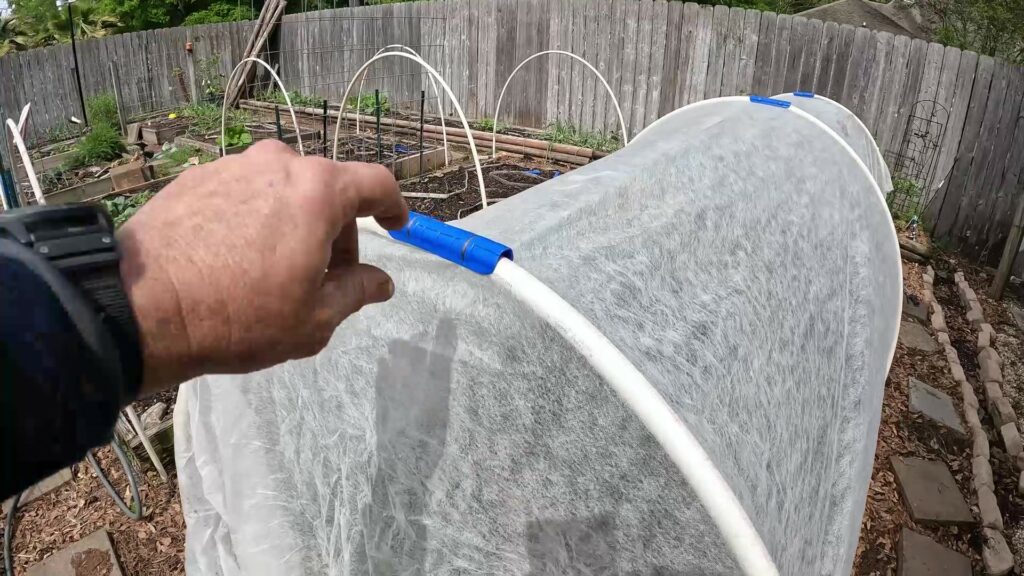
Row covers may also be used with chicken wire or similar to keep deer, rabbits, and other varmints from harvesting your plant before you get to.
You can also put in some row covers with the intent to keep out bad bugs such as Squash Vine Borer’s but you will have to self-pollinate the flowers or open the row cover up to allow pollinators in.
More Harvest per Square Foot
Due to the tight, compact, spacing that raised bed gardens enable, you can competitively produce as much food as you might in a larger space that was planted using less-space efficient row crop methods.
If you think about this, it kind of makes sense. A 4 x 5 raised bed only takes up 20 square feet. A 16 ft conventional row, with similar plant spacing, is in reality, at least a 2 x 16 square foot area meaning this is double the area taken up.
In a backyard, a raised bed has a much smaller footprint and that’s important to many. With the right soil mix and closer plant spacing allowances and thinking in 4-foot-wide rows with each square foot being utilized, raised beds allow far higher yields and more harvest per square foot versus conventional rows.
Conclusion
There are many clear benefits to choosing Raised Bed Gardening versus in-ground gardens as this post describes for you the 11 top benefits of raised bed gardening. Whether you are a beginner gardener or one that has always used conventional rows, you should consider Raised Bed Gardening as it almost always trumps conventional rows for a bountiful harvest requiring a significantly smaller footprint.
This is not to say that some conventional row gardeners have success, especially on a larger scale type of operation. It may make sense for areas that are not space-confined and/or that depend on tractors and combines to efficiently plow, till, and harvest.
But, if you are going to be growing in your backyard, or even in a community garden, Raised Bed Gardening is the best way to go to grow a bountiful harvest, delicious food, and healthy living.
If you like this content, make sure you check out my post on “Are Worms in your Garden Soil Good?“.
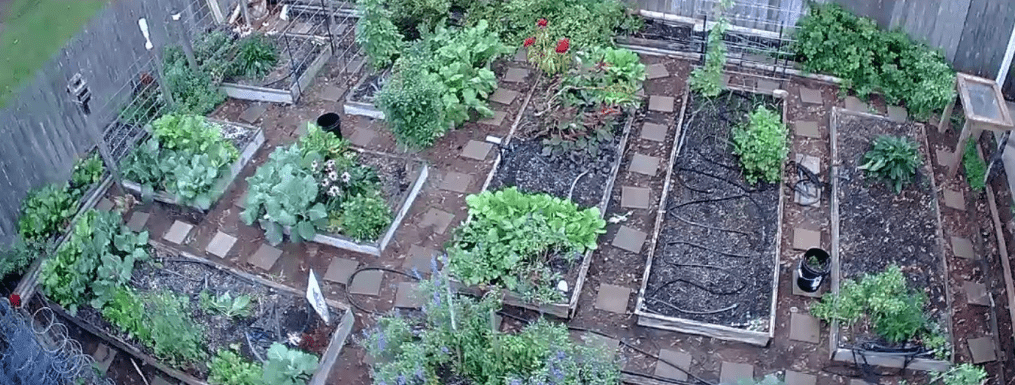
Leave a Reply